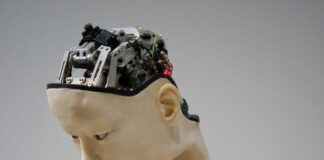Artificial Intelligence (AI) is rapidly transforming many industries, and emergency services are no exception. From fire departments to ambulance services, law enforcement to disaster response teams, AI is enhancing the effectiveness and efficiency of these critical services. In emergency situations, time is of the essence, and AI is being leveraged to save lives, reduce response times, and provide better outcomes. The application of AI in emergency services offers transformative solutions that range from predictive analytics for resource allocation to real-time decision-making during crises. AI’s role in emergency services is not just about automating tasks but also about improving the speed, accuracy, and coordination of responses to incidents. In this article, we will explore 10 game-changing facts about how AI is revolutionizing emergency services, ensuring faster response times, more accurate decisions, and ultimately, saving more lives.
1. AI Improves Emergency Response Time
One of the most immediate and impactful ways AI is transforming emergency services is by improving response times. AI-powered systems can quickly analyze vast amounts of data, such as emergency calls, traffic patterns, weather reports, and more, to help determine the fastest and most efficient route for emergency responders. By optimizing the routes of ambulances, fire trucks, or police vehicles, AI ensures that help arrives as quickly as possible.
For example, AI algorithms can process traffic data in real-time, accounting for road closures, accidents, or congestion to recommend alternative routes. This reduces response times significantly, allowing first responders to reach the scene of an emergency faster. Additionally, AI systems can prioritize emergency calls based on severity, ensuring that the most critical cases are addressed immediately.
2. AI Enhances Decision-Making in Crisis Situations
When responding to emergencies, first responders need to make quick decisions under pressure. AI plays a crucial role in enhancing decision-making by providing real-time data and insights that inform critical choices. Whether it’s evaluating the severity of an incident, assessing risks, or coordinating with other agencies, AI can process information far more quickly and accurately than humans alone.
In firefighting, for example, AI tools can analyze building layouts, weather conditions, and fire spread patterns to help fire chiefs determine the best course of action. Similarly, AI can be used by paramedics to assess medical emergencies, providing real-time guidance on the most effective treatments based on the patient’s symptoms and medical history.
3. AI for Predictive Analytics and Resource Allocation
AI in emergency services also extends to predictive analytics, where it is used to forecast and prepare for future incidents. AI can analyze historical data, patterns, and trends to predict where and when emergencies are most likely to occur. This predictive capability allows agencies to allocate resources more effectively, ensuring that emergency services are ready to respond when and where they are needed most.
For example, predictive analytics powered by AI can help fire departments understand which areas are more prone to wildfires, allowing them to allocate resources more strategically. Similarly, AI can predict where traffic accidents are likely to happen, helping police departments pre-position units in high-risk areas. By forecasting potential events, AI ensures that emergency services are proactive, not just reactive.
4. AI Enhances Communication and Coordination Among Emergency Services
Efficient communication and coordination are key to effective emergency response. In many cases, different emergency services (fire, police, medical) need to work together to resolve an incident. AI is helping improve communication between these agencies, ensuring that everyone involved in a response is on the same page.
AI-driven platforms allow real-time sharing of information and status updates, enabling emergency responders to access vital data quickly. For example, when a fire breaks out, AI systems can instantly provide firefighters with information on building occupancy, hazardous materials, and available resources, helping them make informed decisions in the field. AI also helps emergency services coordinate with local hospitals, ensuring that medical teams are prepared for incoming patients.
5. AI-Powered Drones for Search and Rescue Operations
AI-powered drones are increasingly being used in search and rescue operations, offering capabilities that were previously unimaginable. In situations like natural disasters, where search and rescue teams might have difficulty accessing certain areas, drones equipped with AI can quickly scan large areas for signs of life. These drones can identify heat signatures, detect movement, and even map the terrain, providing real-time data that can guide rescue teams to survivors more efficiently.
For instance, drones equipped with AI are already being deployed to search disaster zones, such as after earthquakes or floods, where they can navigate debris and hazardous conditions to locate survivors. In remote or hard-to-reach locations, drones equipped with AI can cover more ground faster, giving rescue teams a crucial advantage in locating people in need of help.
6. AI for Real-Time Surveillance and Threat Detection
AI is also enhancing the ability to detect potential threats in real-time. Surveillance systems powered by AI can analyze data from various sources, such as CCTV cameras, sensors, and social media, to identify potential security risks or emergencies. For example, AI algorithms can analyze video feeds to detect unusual activity or behaviors that may indicate an impending threat, such as a crowd gathering in a dangerous area or a suspicious vehicle approaching a sensitive location.
In public safety scenarios, AI can also monitor social media platforms for signs of unrest, mass gatherings, or potential criminal activity. By using AI to detect these threats early, emergency services can take preemptive action to mitigate risks before they escalate into full-blown emergencies.
7. AI Enhances Medical Diagnosis and Treatment in the Field
AI’s impact on emergency medical services is profound, particularly in terms of diagnosing and treating patients on-site before they reach the hospital. Paramedics and emergency medical technicians (EMTs) are increasingly using AI-powered devices to assess patients and provide immediate medical treatment. These AI systems can analyze patient symptoms and medical data to recommend the best course of action for treatment, even before the patient reaches the hospital.
For example, AI can assist paramedics in diagnosing heart attacks, strokes, or other critical conditions by analyzing vital signs and medical history in real-time. By providing guidance on the most effective treatments, AI ensures that patients receive the best possible care while en route to the hospital, ultimately improving patient outcomes.
8. AI-Assisted Robotics in Emergency Response
AI-powered robotics are being used in various emergency service operations to assist with tasks that would be too dangerous or difficult for humans to perform. Robots equipped with AI can enter hazardous environments, such as burning buildings or contaminated areas, to perform search and rescue missions or deliver supplies. These robots can be remotely controlled or operate autonomously, providing valuable support to human responders.
In bomb disposal, for instance, AI-driven robots are used to assess the threat and neutralize explosives without putting human lives at risk. Similarly, AI-powered robots can navigate dangerous terrain to deliver medical supplies or assist with firefighting operations. These robots augment the capabilities of emergency responders, allowing them to perform tasks more efficiently and safely.
9. AI in Disaster Simulation and Training
Training emergency responders is critical to ensuring they are prepared for the unexpected. AI is enhancing training programs by providing realistic disaster simulations that help responders practice their skills in various scenarios. These simulations use AI to create dynamic, adaptive environments that change based on the decisions made by trainees.
For example, AI can simulate real-time disaster situations, such as a large-scale fire or a multi-vehicle accident, and adjust the scenario based on how trainees respond. This allows emergency services to provide more hands-on, realistic training, improving the preparedness of responders for actual emergencies. By immersing trainees in AI-powered simulations, emergency services can ensure that their teams are ready to handle any situation.
10. AI for Post-Incident Analysis and Improvement
After an emergency response, it’s important to analyze the effectiveness of the operation and identify areas for improvement. AI is being used to assess emergency responses, providing insights into what worked well and what could be improved for future incidents. By analyzing data from previous emergencies, AI systems can identify trends and patterns that can help optimize future responses.
For example, AI can analyze data such as response times, resource utilization, and coordination between different agencies to evaluate the overall effectiveness of a response. This data-driven approach enables emergency services to continuously improve their operations and ensure better outcomes in future emergencies.
Conclusion
Artificial Intelligence is undoubtedly revolutionizing the field of emergency services, offering solutions that improve response times, decision-making, and overall effectiveness. From enhancing predictive analytics and optimizing resource allocation to supporting search and rescue efforts and improving medical treatment, AI is helping emergency services save lives and better serve communities. As AI technology continues to evolve, its potential to transform emergency services will only grow, leading to smarter, faster, and more efficient responses to crises.
As we look to the future, it’s clear that AI will play an increasingly central role in shaping the future of emergency services, ensuring that they are better equipped to handle the challenges of an unpredictable world. By leveraging AI, emergency responders will have the tools they need to act more decisively, save more lives, and protect communities with greater precision and speed.














